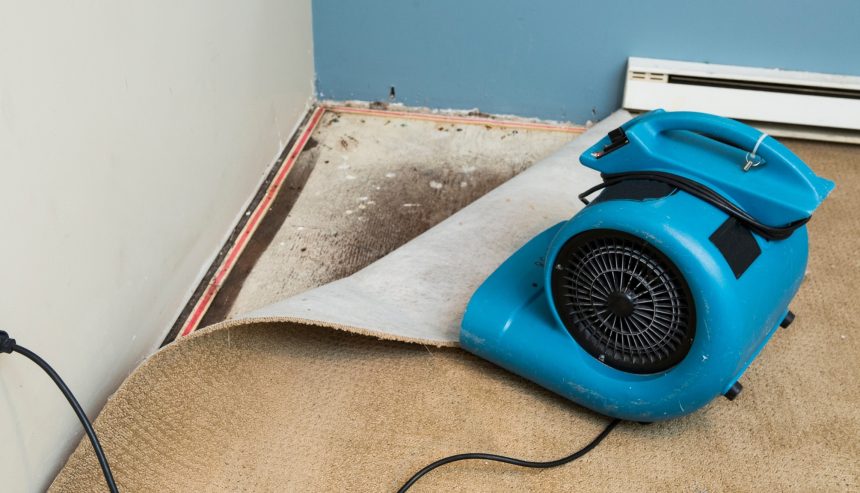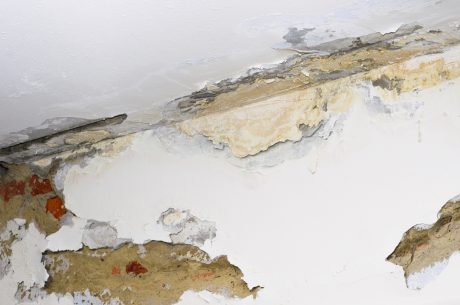Water damage can turn a safe home or business into a breeding ground for hidden dangers. Beyond soaked carpets or warped furniture, the real threat lies in lingering moisture. Left unchecked, this moisture seeps into walls, flooring, and air, causing structural decay and fueling mold growth. That’s where specialized tools come in, and few are as vital as a dehumidifier in water damage restoration. These machines don’t just dry the air; they accelerate recovery, protect property, and prevent long-term complications.
In this blog, we’ll explore the role of dehumidifiers water damage recovery, breaking down how they work, why they’re essential, and what makes them a cornerstone in professional restoration efforts.
Why Dehumidifiers Matter in Water Damage Recovery
Excess moisture isn’t just uncomfortable, it’s destructive. The role of dehumidifiers in water damage recovery is to pull that hidden dampness out of the air and materials, cutting off mold before it spreads and helping homes bounce back faster.
Without dehumidifiers, restoration is incomplete, no matter how many fans or air movers are used. And while equipment is vital, it’s equally important for homeowners to understand insurance coverage for water damage to know what support they can expect during recovery.
Understanding the Impact of Excess Moisture
Moisture that lingers after leaks, floods, or pipe bursts doesn’t stay put. It creeps into drywall, subfloors, insulation, and even electrical systems. This silent spread is why dehumidifiers water damage solution is more than helpful; it’s necessary. Unchecked moisture often worsens silently, causing damage long before it’s visible.
How Water Damage Escalates Indoors
Water trapped indoors can cause swelling in wood, cracks in walls, and corrosion of metal parts. Over time, this weakens the entire structure, making recovery costly and complex. Using moisture removal techniques early helps minimize hidden damage before it becomes a severe safety concern.
The Connection Between Humidity and Mold
When humidity remains above safe levels, mold spores thrive within 24–48 hours. The role of dehumidifiers in water damage recovery is to control this indoor climate, removing the conditions that mold needs to survive. This helps protect indoor air quality and prevents long-term health risks.
How Dehumidifiers Work in the Restoration Process
Dehumidifiers in water damage restoration don’t just remove dampness from the air; it accelerate evaporation from soaked materials, forcing trapped water to come to the surface. This speeds up the drying timeline significantly. In short, it creates the controlled environment needed for full recovery.
Step-by-Step Moisture Extraction
The machine pulls in moist air, passes it through cooling coils, and collects the condensed water. Dry air is then released back into the room, creating a continuous drying cycle. This cycle continues until the indoor humidity reaches safe levels.
Targeting Hidden Water Sources
Professional-grade dehumidifiers can reach water in tight corners, under floors, or inside walls, areas that regular drying methods often lack. That’s why they are essential for addressing damage you can’t always see.
Types of Dehumidifiers Used in Restoration
Not all dehumidifiers are the same. In fact, the role of dehumidifiers water damage recovery often depends on selecting the right type of machine for the situation. Choosing the correct model can determine how quickly and thoroughly a space dries.
- Refrigerant Dehumidifiers: Best for warm, humid climates, these units cool air to extract moisture efficiently.
- Desiccant Dehumidifiers: Ideal for colder environments, these machines use absorbent materials to pull water vapor out of the air.
- Low Grain Refrigerant (LGR) Dehumidifiers: A powerful option that reduces humidity to lower levels than standard refrigerant models, making them a favorite in professional water cleanup and restoration.
Understanding the strengths of each type helps professionals apply the right moisture removal techniques for faster recovery. Using the right dehumidifier ensures both speed and precision in the drying process.
Benefits of Using Dehumidifiers for Water Damage
Employing dehumidifiers water damage restoration has far-reaching benefits beyond just drying out a space. These machines safeguard health, property, and peace of mind by tackling hidden moisture problems.
- Faster Drying and Recovery: Dehumidifiers reduce drying times by days, helping families and businesses return to normal life sooner.
- Preventing Mold and Secondary Issues: By keeping humidity low, they cut off mold and bacterial growth, protecting both health and property.
- Protecting Structural Integrity: Walls, floors, and foundations remain stable when moisture is controlled, preventing costly repairs later.
Using dehumidifiers isn’t just about removing moisture; it’s about creating a safer, healthier, and more stable environment after water intrusion. Their benefits extend well beyond what the eye can see.

Pairing Dehumidifiers with Moisture Removal Techniques
For the best results, dehumidifiers water damage restoration is paired with other drying methods to maximize efficiency and ensure no hidden moisture is left behind.
- Air Movers and Ventilation Support: Air movers circulate dry air, pushing moisture from wet surfaces into the air so dehumidifiers can capture it.
- Monitoring Progress with Moisture Meters: Professionals use moisture meters to track drying progress and confirm that no damp spots are missed.
- Layered Drying for Complete Results: A strategic mix of equipment ensures every layer of a structure, from surface to subfloor, is fully dry.
When combined with these moisture removal techniques, dehumidifiers deliver faster and more reliable drying outcomes, reducing risks of long-term damage.
Choosing the Right Dehumidifier
The effectiveness of the role of dehumidifiers in water damage recovery often depends on using the right machine for the right space. The size of the affected area, the climate, and the extent of water intrusions all influence which type works best. A well-matched dehumidifier not only speeds up drying but also prevents unnecessary energy use and costs.
Matching Machine to Space Size
A small unit won’t handle a large, flooded basement. Proper sizing ensures efficient drying. Using too small a machine can leave behind hidden moisture, while the right unit, paired with moisture removal techniques, ensures the job is completed thoroughly.
Considering Climate and Temperature
Refrigerant models work best in warm conditions, while desiccant units excel in colder settings. Choosing the wrong type for the environment can slow down drying and prolong recovery. Factoring in conditions ensures dehumidifiers water damage solutions work at peak efficiency.
Professional vs. DIY Approaches
While household dehumidifiers may help minor issues, professional equipment is critical for serious damage caused by water. For more details, resources like the Institute of Inspection, Cleaning, and Restoration Certification (IICRC) explain why professional intervention is so important. Certified experts apply advanced moisture removal techniques that comply with industry standards and guarantee long-term results.
Conclusion
Moisture may seem harmless at first, but its long-term effects can be devastating if ignored. Dehumidifiers in water damage restoration are the silent heroes of recovery, safeguarding against mold, speeding up drying, and preserving the integrity of homes and businesses. The role of dehumidifiers in water intrusion recovery goes far beyond comfort; it ensures safety, stability, and peace of mind.
FAQs
Q1. How long should dehumidifiers run after water damage?
A: Most dehumidifiers should run continuously for at least 24–72 hours, but timing depends on severity and space size.
Q2. Can regular home dehumidifiers handle severe water damage?
A: No. While they may help with mild dampness, large-scale flooding requires professional-grade equipment.
Q3. What happens if dehumidifiers aren’t used in restoration?
A: Without them, moisture lingers, leading to mold growth, weakened structures, and higher repair costs.



